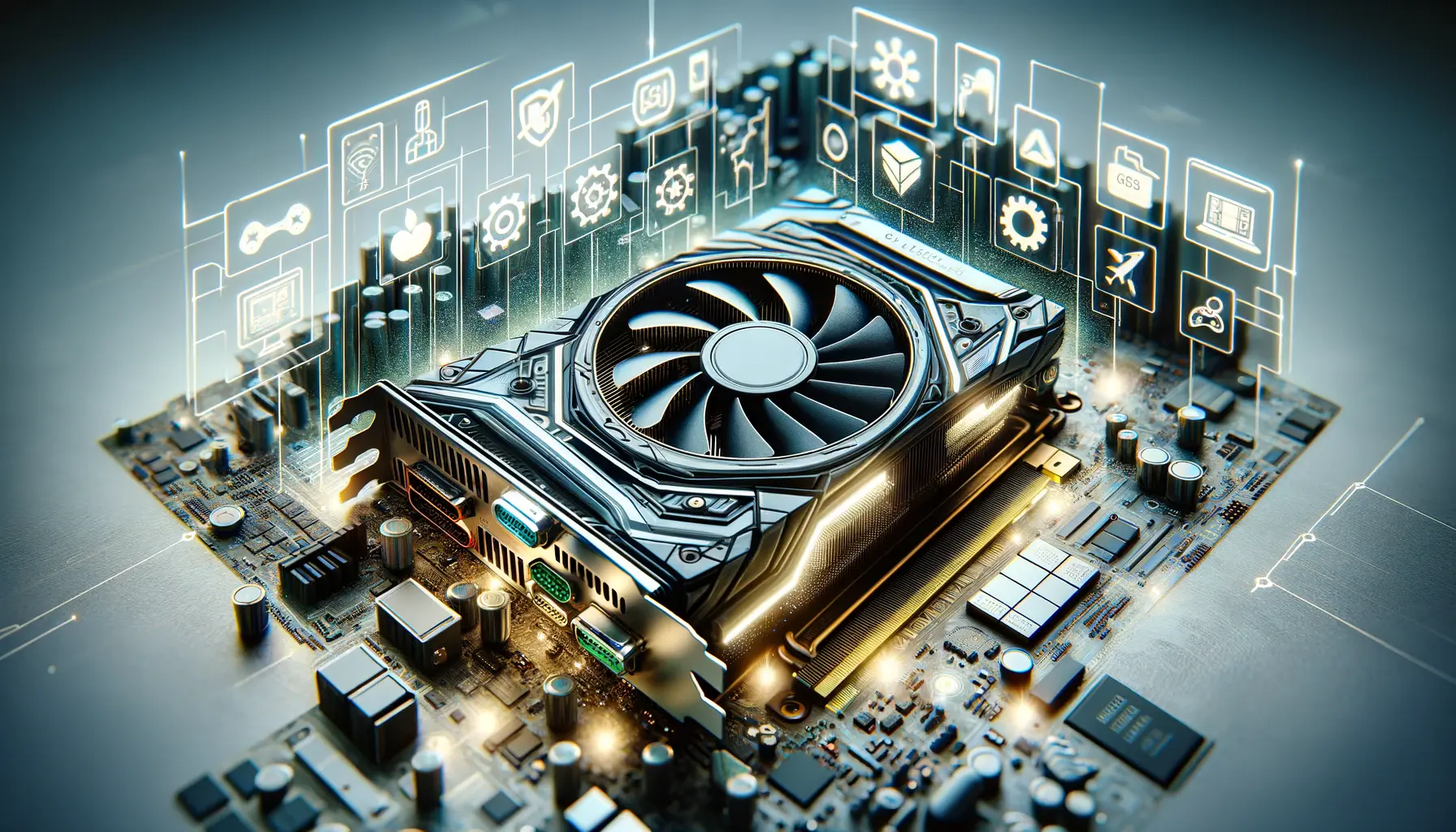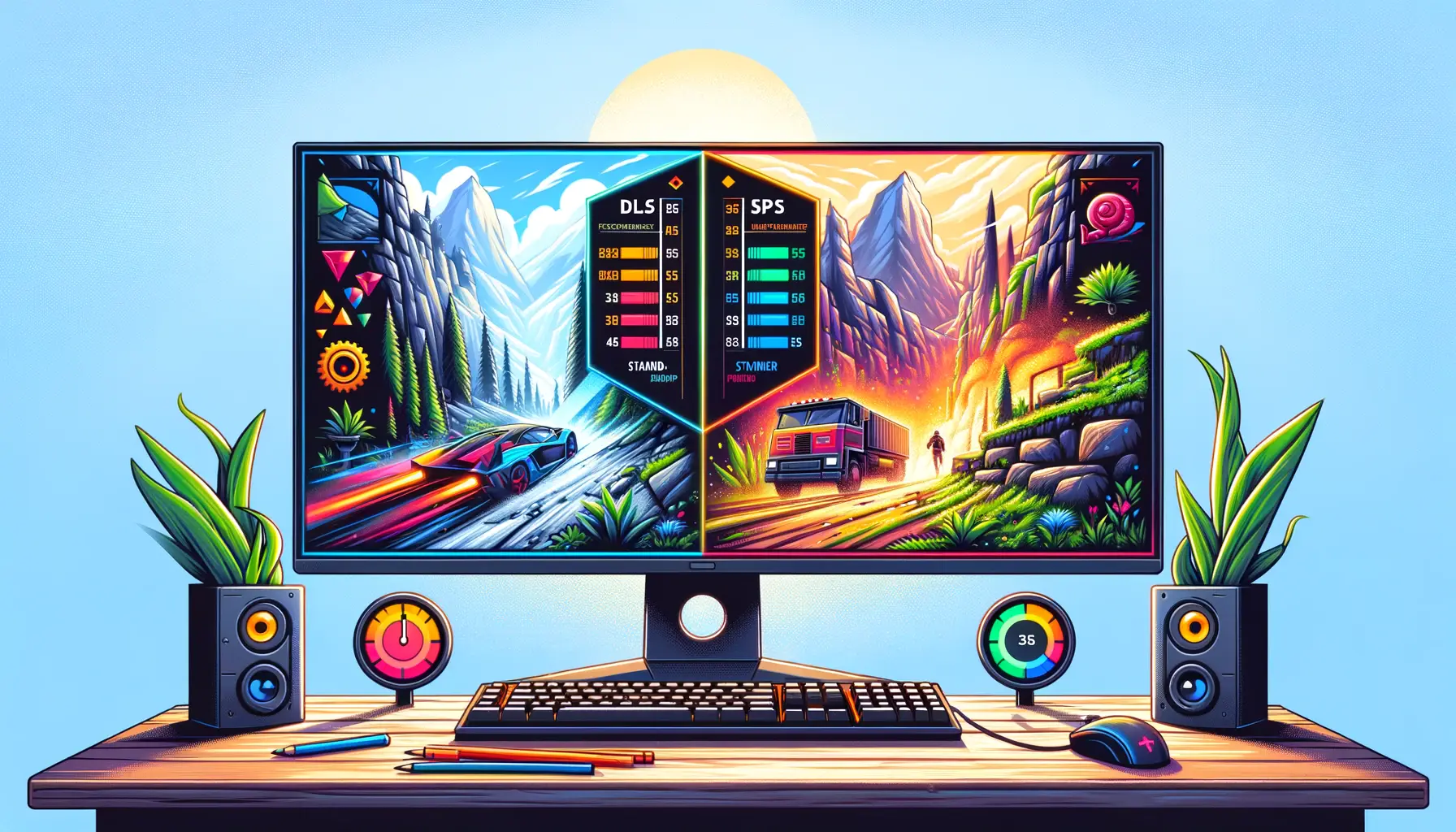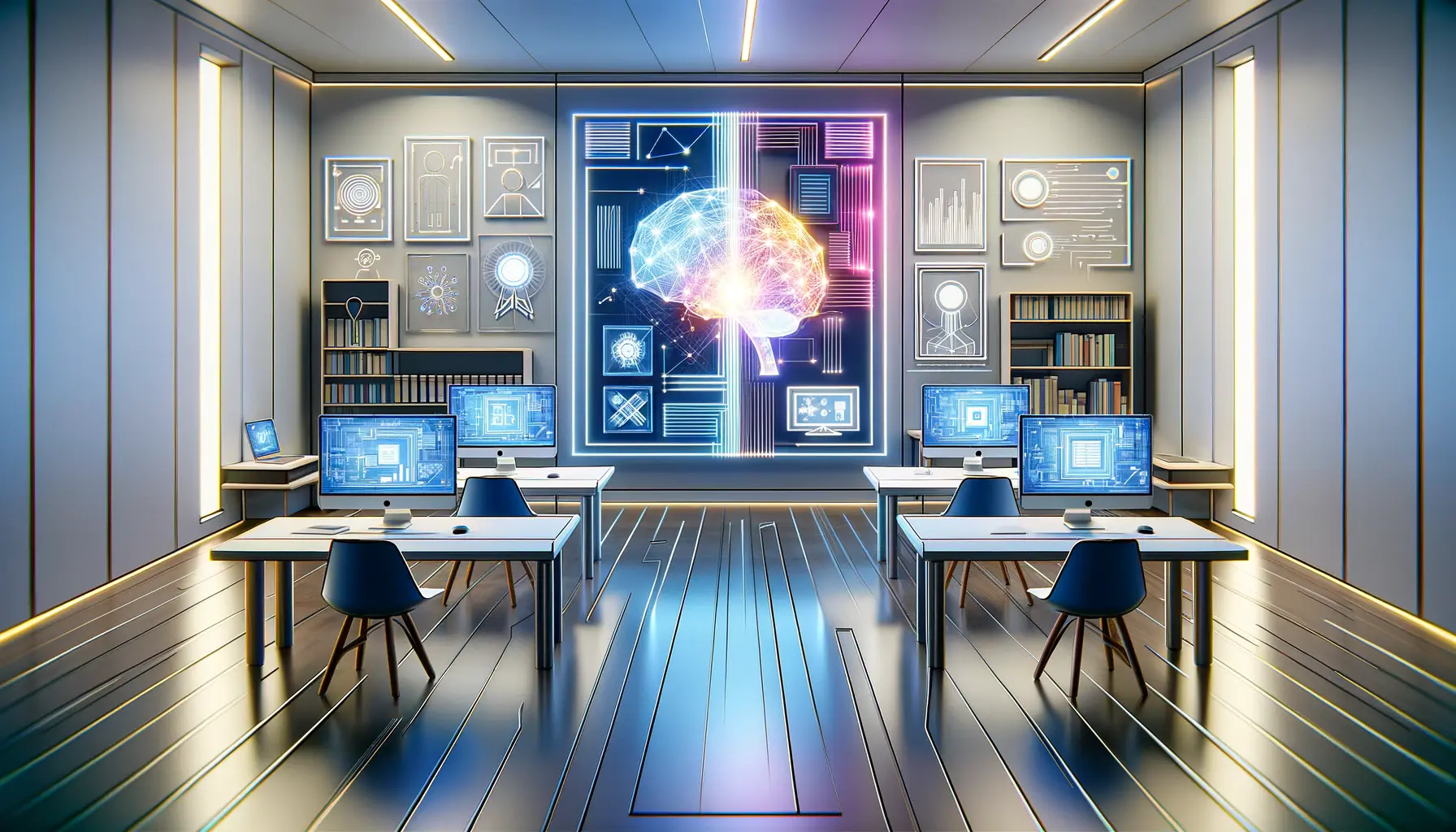The realm of gaming and graphical rendering is witnessing a revolutionary phase with the advent of NVIDIA’s Deep Learning Super Sampling (DLSS) technology, particularly with its latest iteration, DLSS 3.
This technology, designed to harness the power of AI and machine learning, has not only redefined the boundaries of visual fidelity and performance in PC gaming but also sparked a conversation about its potential applicability across various platforms.
The concept of cross-platform compatibility for DLSS 3 opens up a plethora of possibilities for developers and gamers alike, promising to bridge the gap between different hardware ecosystems while ensuring an unparalleled gaming experience.
At its core, DLSS 3 leverages NVIDIA’s advanced AI algorithms to upscale images in real-time, allowing games to run at higher frame rates without compromising on visual quality.
This is achieved by rendering fewer pixels and then using AI to intelligently construct high-quality images.
Such a technique not only boosts performance on existing hardware but also paves the way for cross-platform integration, potentially making high-end gaming accessible on less powerful devices.
The discussion surrounding DLSS 3’s cross-platform potential is not just about enhancing game visuals but also about democratizing access to high-quality gaming experiences across various devices and platforms.
- Understanding DLSS 3 Technology
- The Cross-Platform Potential of DLSS 3
- Challenges and Considerations for Cross-Platform DLSS
- DLSS 3 in Game Development
- Future of Gaming with DLSS 3
- DLSS 3 and Esports
- DLSS 3 and Virtual Reality
- Revolutionizing Gaming with DLSS 3: A Cross-Platform Vision
- DLSS 3: Cross-Platform Potential FAQs
Understanding DLSS 3 Technology
What is DLSS and How Does It Work?
Deep Learning Super Sampling, or DLSS, is a groundbreaking rendering technology developed by NVIDIA that uses neural networks to analyze and upscale lower-resolution images in real-time.
By doing so, it significantly improves the frame rate and image quality of video games and applications on supported GPUs.
DLSS 3, the latest version, introduces several advancements over its predecessors, including the ability to generate entirely new frames through AI, which further enhances performance and visual output.
This technology is built upon the foundation of NVIDIA’s dedicated Tensor Cores, available on RTX series graphics cards.
These cores are specifically designed to handle AI and machine learning tasks efficiently, allowing DLSS to perform its upscaling magic without burdening the main GPU resources dedicated to rendering the game.
This efficiency is key to enabling higher frame rates and better resolutions, making games more immersive and visually appealing.
The Role of AI in DLSS 3
The integration of AI in DLSS 3 is what sets it apart from traditional upscaling methods.
By utilizing a deep learning neural network, DLSS 3 analyzes thousands of pairs of low and high-resolution images to learn how to optimally upscale images.
Over time, as it processes more data, the AI model becomes increasingly proficient at predicting and generating high-quality images from lower-resolution inputs.
This continuous improvement cycle ensures that the visual quality delivered by DLSS 3 remains at the cutting edge of what’s possible in real-time rendering.
Moreover, the AI-driven approach of DLSS 3 not only improves image quality but also reduces latency, providing a smoother and more responsive gaming experience.
This is particularly beneficial for fast-paced games where every millisecond counts.
The ability of DLSS 3 to deliver both high performance and high-quality visuals without compromise is a testament to the power of AI in gaming.
DLSS 3’s AI-driven approach is revolutionizing gaming visuals and performance, setting new standards for what’s possible in real-time rendering.
The Cross-Platform Potential of DLSS 3
The advent of DLSS 3 has not only revolutionized the way games are rendered on high-end PCs but also opened up new possibilities for cross-platform gaming.
The technology’s ability to deliver high-quality graphics at unprecedented frame rates makes it a prime candidate for bridging the performance gap between different gaming platforms.
This section explores the potential of DLSS 3 to transform gaming across a variety of devices, from consoles to mobile platforms.
One of the most significant barriers to cross-platform gaming has been the disparity in hardware capabilities.
High-end PC games often require powerful graphics cards to run at their best, which can limit their playability on consoles or mobile devices.
However, DLSS 3’s intelligent upscaling and performance optimization could change this dynamic by allowing games to run smoothly on less powerful hardware without compromising on visual quality.
Enhancing Console Gaming with DLSS 3
- Improved Performance: Consoles could greatly benefit from DLSS 3 by achieving higher frame rates and resolutions without the need for hardware upgrades. This means smoother gameplay and sharper images on existing console hardware.
- Longer Hardware Lifespan: By reducing the need for frequent hardware updates, DLSS 3 can extend the lifespan of current console generations, making gaming more affordable and accessible to a wider audience.
DLSS 3’s Impact on Mobile Gaming
- High-Quality Gaming on the Go: DLSS 3 could enable mobile devices to run games with PC-level graphics, transforming the mobile gaming experience by offering high-quality visuals previously thought impossible on such platforms.
- Energy Efficiency: The efficiency of DLSS 3 means that mobile games can look better and run longer on a single battery charge, addressing one of the main limitations of gaming on the go.
The cross-platform potential of DLSS 3 extends beyond just improving visual quality and performance.
It also has the potential to unify the gaming ecosystem, making it easier for developers to create games that can be enjoyed across all platforms without the need for platform-specific optimizations.
This could lead to a more cohesive gaming experience, where players have the freedom to play their favorite games on any device without compromise.
The cross-platform capabilities of DLSS 3 could democratize high-quality gaming, making it accessible across all devices and platforms.
Challenges and Considerations for Cross-Platform DLSS
While the potential for DLSS 3 to revolutionize cross-platform gaming is immense, implementing this technology across different platforms comes with its own set of challenges and considerations.
These hurdles range from technical limitations to platform-specific restrictions, all of which must be navigated carefully to fully realize DLSS 3’s cross-platform potential.
Understanding these challenges is crucial for developers and the broader gaming community, as it sheds light on the complexities involved in making cutting-edge technologies like DLSS 3 accessible on a wide range of hardware.
This section explores some of the key obstacles and factors that need to be addressed to bring DLSS 3’s benefits to a broader audience.
Technical Limitations and Compatibility
- Hardware Requirements: DLSS 3 relies on NVIDIA’s RTX GPUs, which are equipped with Tensor Cores necessary for its AI-driven processes. This means that, for now, the technology is limited to platforms that can support these specific hardware requirements.
- Software Integration: Integrating DLSS 3 into games requires developers to work closely with NVIDIA’s SDKs and tools. This can pose a challenge for cross-platform compatibility, especially for consoles and mobile devices that use different graphics architectures.
Market and Ecosystem Dynamics
- Platform Exclusivity: The gaming industry often sees technologies being used as exclusive selling points for specific platforms. This exclusivity can hinder the widespread adoption of DLSS 3 across all platforms, as console manufacturers may opt for proprietary solutions.
- Developer Resources: Implementing DLSS 3 across multiple platforms requires significant investment in terms of time and resources. Smaller development teams might find it challenging to allocate the necessary resources for such an endeavor.
Despite these challenges, the push for cross-platform DLSS 3 integration continues to gain momentum.
Solutions are being explored to overcome hardware limitations, such as developing more universal versions of DLSS that could work on a broader range of GPUs.
Additionally, efforts are underway to simplify the integration process for developers, making it easier to incorporate DLSS 3 into cross-platform titles.
The journey towards a fully cross-platform DLSS 3 is complex, but the potential benefits for the gaming community are too significant to ignore.
As technology advances and the industry adapts, the barriers to DLSS 3’s cross-platform adoption are likely to diminish, paving the way for a new era of gaming that is more inclusive, accessible, and visually stunning than ever before.
Overcoming the challenges of cross-platform DLSS integration is key to unlocking its full potential and transforming the gaming landscape.
DLSS 3 in Game Development
The integration of DLSS 3 into game development marks a significant shift in how developers approach game design and optimization.
With its advanced AI-driven capabilities, DLSS 3 offers developers the tools to push the boundaries of graphical fidelity and performance, creating more immersive and visually stunning gaming experiences.
However, leveraging this technology also requires a nuanced understanding of its impact on the development process and the gaming experience as a whole.
This section delves into the role of DLSS 3 in game development, exploring how it influences design decisions, development workflows, and ultimately, the player’s experience.
The aim is to shed light on the transformative potential of DLSS 3 for developers and how it can be harnessed to elevate gaming to new heights.
Optimizing Game Performance
- Enhanced Frame Rates: By intelligently upscaling lower-resolution images, DLSS 3 allows games to run at higher frame rates without sacrificing visual quality. This is particularly beneficial for resource-intensive titles, enabling them to achieve smooth performance on a wider range of hardware.
- Reduced Hardware Strain: DLSS 3’s efficiency reduces the load on the GPU, allowing for more headroom in other areas of game development, such as AI complexity or physics simulations, enhancing the overall gaming experience.
Improving Visual Fidelity
- Sharper Images: DLSS 3’s AI algorithms generate images that are often indistinguishable from, or even superior to, native high-resolution rendering. This results in crisper, more detailed visuals that can make game worlds more immersive and realistic.
- Advanced Rendering Techniques: The performance gains from DLSS 3 enable developers to employ more advanced rendering techniques, such as ray tracing, without the usual performance penalties. This allows for more realistic lighting, shadows, and reflections, further enhancing visual quality.
The adoption of DLSS 3 in game development is not just about improving game performance and visuals; it’s also about reimagining what’s possible in gaming.
Developers now have the opportunity to create games that were previously unfeasible due to hardware limitations, opening up new creative possibilities and storytelling techniques.
Moreover, DLSS 3’s cross-platform potential means that these advancements can be enjoyed by a broader audience, regardless of their hardware preferences.
As DLSS 3 continues to evolve and become more integrated into the game development ecosystem, its impact on the industry is expected to grow.
By offering a blend of performance optimization and enhanced visual fidelity, DLSS 3 is setting new standards for what games can look like and how they can perform, heralding a new era of game development focused on pushing the limits of technology and creativity.
DLSS 3 is revolutionizing game development by enabling unprecedented levels of performance and visual quality, paving the way for a new generation of games.
Future of Gaming with DLSS 3
The introduction of DLSS 3 by NVIDIA heralds a new era in the gaming industry, one where the boundaries of performance and visual quality are continuously being pushed forward.
As this technology matures and becomes more widely adopted, its impact on the future of gaming is expected to be profound and far-reaching.
This section explores the potential long-term effects of DLSS 3 on gaming, from the evolution of game design to changes in player expectations and hardware development.
DLSS 3’s ability to deliver high-quality visuals at unparalleled frame rates is not just a technical achievement; it’s a catalyst for change in the gaming ecosystem.
By enabling more efficient use of hardware resources, DLSS 3 is setting the stage for a future where the focus shifts from raw hardware power to smarter, AI-driven optimizations.
This shift has the potential to redefine what gamers expect from their gaming experiences and what developers can achieve within the constraints of current and future hardware.
Transforming Game Design and Development
- Enhanced Creative Freedom: With the performance benefits provided by DLSS 3, developers can explore more ambitious and graphically intensive game designs without worrying about alienating players with less powerful hardware. This could lead to a new wave of visually stunning and immersive games that push the boundaries of storytelling and gameplay.
- Accessibility and Inclusivity: DLSS 3’s efficiency makes high-end gaming experiences more accessible to a broader audience, breaking down the barriers posed by hardware limitations. This inclusivity can expand the gaming market and foster a more diverse community of players and creators.
Shaping Player Expectations
- Raising the Bar for Visuals and Performance: As gamers become accustomed to the high frame rates and visual quality enabled by DLSS 3, their expectations for future games will inevitably rise. Developers will be challenged to meet and exceed these expectations, driving innovation in game design and technology.
- Seamless Cross-Platform Play: The potential for DLSS 3 to bridge the performance gap between different platforms could lead to a more unified gaming experience, where players expect seamless play across PC, console, and mobile devices without compromising on quality or performance.
The future of gaming with DLSS 3 looks promising, with the technology poised to influence not just how games are made, but also how they are played and experienced.
As AI and machine learning continue to evolve, the possibilities for DLSS and similar technologies are bound to expand, further blurring the lines between reality and digital worlds.
The gaming industry stands on the brink of a new frontier, one where the immersive potential of games is limited only by the imagination of developers and the evolving capabilities of AI-driven technologies like DLSS 3.
In the coming years, as DLSS 3 becomes a staple in game development and hardware optimization, the gaming landscape is likely to undergo a significant transformation.
This will not only enhance the gaming experience for players but also democratize access to high-quality gaming, ensuring that the future of gaming is vibrant, inclusive, and boundlessly creative.
The future of gaming with DLSS 3 promises a revolution in visual quality and performance, setting new standards for what games can achieve and how they are experienced.
DLSS 3 and Esports
The rise of esports has been one of the most significant developments in the gaming industry over the past decade, with competitive gaming becoming a global phenomenon.
The introduction of DLSS 3 has the potential to significantly impact the esports scene, from how games are played and viewed to the overall performance and fairness in competitions.
This section examines the influence of DLSS 3 on esports, highlighting the benefits and considerations it brings to competitive gaming.
DLSS 3’s ability to enhance game performance without sacrificing visual quality is particularly relevant in the esports arena, where every frame and millisecond can make a difference in competitive play.
The technology’s promise of higher frame rates and better visuals could lead to a more engaging and fair competitive environment, provided it is implemented and regulated correctly.
Improving Competitive Play
- Leveling the Playing Field: By enabling higher frame rates on a wider range of hardware, DLSS 3 can help level the playing field in esports, ensuring that players’ performance is less dependent on their hardware capabilities and more on their skills and strategies.
- Enhanced Viewing Experience: For spectators, DLSS 3 can improve the viewing experience by providing crisper and more detailed visuals, making it easier to follow the action and appreciate the skill level of the competitors.
Considerations for Fair Play
- Standardization Across Competitions: To ensure fairness, esports organizations may need to standardize the use of DLSS 3 across competitions, ensuring that all players have access to the same performance enhancements.
- Regulating Performance Enhancements: There may also be a need to regulate how DLSS 3 and similar technologies are used in competitive play to prevent any potential advantages that could arise from different settings or hardware configurations.
The integration of DLSS 3 into esports represents a promising development that could enhance both the competitive and spectator experiences.
However, it also requires careful consideration and regulation by esports organizations to ensure that the technology’s benefits are realized without compromising the fairness and integrity of competitive play.
As esports continues to grow and evolve, technologies like DLSS 3 will play a crucial role in shaping its future.
By embracing these advancements, the esports community can look forward to a new era of competitive gaming that is more inclusive, visually stunning, and fair for all participants.
Embracing DLSS 3 in esports could revolutionize competitive gaming, enhancing performance and fairness while providing a better experience for players and viewers alike.
DLSS 3 and Virtual Reality
The immersive world of virtual reality (VR) stands to gain significantly from the advancements brought about by DLSS 3.
VR experiences, known for their demand for high frame rates and resolution to ensure a comfortable and immersive experience, can benefit immensely from the AI-driven upscaling and performance optimization that DLSS 3 offers.
This section explores the potential impact of DLSS 3 on virtual reality, highlighting how it could transform VR gaming and applications.
DLSS 3’s ability to deliver higher frame rates without compromising on visual fidelity is crucial for VR, where the smoothness of motion and clarity of visuals are paramount for preventing motion sickness and maintaining immersion.
By applying DLSS 3 technology, developers can create VR experiences that are not only more visually impressive but also more accessible to users without high-end VR-ready PCs.
Enhancing VR Immersion
- Increased Visual Clarity: DLSS 3 can significantly improve the visual clarity of VR content, making environments and textures appear more detailed and realistic. This enhancement in visual quality is vital for creating truly immersive VR experiences.
- Smooth Performance: The performance boost provided by DLSS 3 is especially beneficial in VR, where maintaining a high and consistent frame rate is essential for a comfortable experience. This can help reduce the occurrence of motion sickness, a common issue in VR.
Expanding VR Accessibility
- Lower Hardware Requirements: By optimizing performance, DLSS 3 lowers the barrier to entry for high-quality VR, making it possible for more users to enjoy immersive VR experiences without needing top-of-the-line hardware.
- Broader Content Creation: Developers can leverage DLSS 3 to push the boundaries of VR content creation, designing more complex and visually stunning VR worlds that were previously too performance-intensive for mainstream VR systems.
The integration of DLSS 3 into VR has the potential to significantly advance the field, making high-quality VR experiences more accessible and enjoyable for a wider audience.
As VR technology continues to evolve, the role of performance optimization technologies like DLSS 3 will become increasingly important, driving the development of more immersive and complex VR content.
In conclusion, DLSS 3’s impact on virtual reality represents a significant step forward for the technology, promising to enhance the quality, accessibility, and overall experience of VR gaming and applications.
As we look to the future, the synergy between DLSS 3 and VR is poised to unlock new possibilities for immersion and interactivity in virtual spaces.
DLSS 3 is set to revolutionize virtual reality by enhancing visual fidelity and performance, making immersive VR experiences more accessible to a broader audience.
Revolutionizing Gaming with DLSS 3: A Cross-Platform Vision
The journey through the capabilities, challenges, and potential of DLSS 3 reveals a future where gaming transcends the limitations of hardware and platforms.
NVIDIA’s DLSS 3 technology, with its innovative use of AI for real-time upscaling, is not just an enhancement of gaming visuals and performance; it’s a transformative force poised to redefine the gaming landscape.
This conclusion aims to encapsulate the essence of DLSS 3’s impact on gaming, from development to the end-user experience, emphasizing its cross-platform potential and the broader implications for the industry.
Empowering Developers and Gamers Alike
The advent of DLSS 3 technology heralds a new era for game developers, offering them unprecedented freedom to push the boundaries of graphical fidelity and performance.
This empowerment comes with the promise of leveling the playing field across different gaming platforms, ensuring that the future of gaming is not constrained by hardware limitations but enriched by creativity and innovation.
For gamers, DLSS 3 promises a future where immersive, high-fidelity gaming experiences are more accessible, regardless of the platform or device they choose to play on.
Challenges Ahead
Despite the optimistic outlook, the path to fully realizing DLSS 3’s cross-platform potential is fraught with technical and market challenges.
From hardware compatibility to ecosystem dynamics, the journey towards a universally accessible DLSS 3 technology underscores the need for industry-wide collaboration and innovation.
Overcoming these challenges will require concerted efforts from developers, hardware manufacturers, and platform holders alike, all working towards a common goal of democratizing high-quality gaming experiences.
The Future is Bright
The implications of DLSS 3 extend beyond immediate performance gains and visual enhancements.
As we look to the future, DLSS 3 stands as a testament to the role of AI and machine learning in shaping the next generation of gaming.
From esports to virtual reality, DLSS 3 is poised to impact every facet of the industry, driving advancements that will benefit gamers, developers, and spectators alike.
The potential for DLSS 3 to facilitate seamless cross-platform play and bring high-end gaming experiences to a wider audience is a vision that promises to redefine our understanding of what is possible in the world of gaming.
In conclusion, DLSS 3 embodies the spirit of innovation that drives the gaming industry forward.
As we stand on the brink of a new era, the cross-platform potential of DLSS 3 offers a glimpse into a future where gaming is boundless, inclusive, and more immersive than ever.
The journey ahead may be complex, but the destination—a world where the power of AI-driven technologies like DLSS 3 enhances every gaming experience—is undoubtedly worth the effort.
DLSS 3: Cross-Platform Potential FAQs
Explore the most common inquiries about DLSS 3 and its impact on gaming across different platforms.
DLSS 3 is NVIDIA’s AI-driven rendering technology that enhances game performance and visual quality by intelligently upscaling images in real-time.
DLSS 3 is supported on NVIDIA GeForce RTX 40 Series GPUs, leveraging their advanced AI capabilities for optimal performance.
While primarily designed for PC gaming, DLSS 3’s cross-platform potential could enhance console gaming by improving frame rates and visual fidelity.
Yes, DLSS 3 significantly benefits VR by providing higher frame rates and improved visual clarity, crucial for an immersive VR experience.
DLSS 3 can level the playing field in esports by delivering smoother performance and better visuals, enhancing both play and spectating experiences.
While not currently available on mobile, DLSS 3’s efficiency and performance gains hold potential for future mobile gaming applications.
Technical compatibility, hardware requirements, and ensuring a consistent gaming experience are key challenges for cross-platform DLSS 3 implementation.
DLSS 3 allows developers to push graphical boundaries and improve performance, enabling more ambitious game designs and better player experiences.













